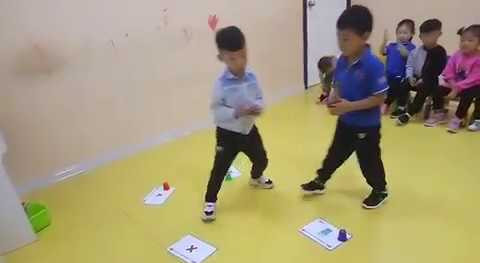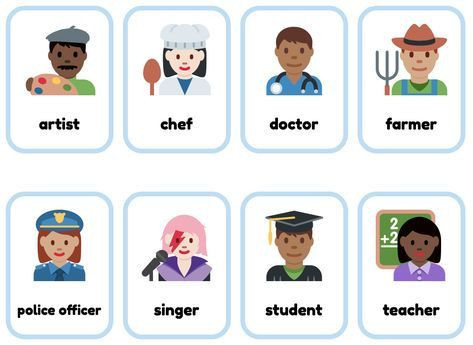Learning Styles and Flashcards
Flashcards are a very important tool in the classroom. They are a great visual aid that helps with visual style learners.
There are several different styles of learning. Visual, auditory, physical, verbal, logical, social and solitary. .
Learning styles focus on how a student is best able to learn or their preferred method of attaining knowledge. This is usually influenced by their unique brain and experiences, and has a direct impact on the way they get information and learn.
For teachers it’s extremely important to understand learning styles and how they impact the students in your classroom. Each student will have their own preferred learning style, and teachers can help create activities that cater to different learning styles to help more students learn effectively..
The visual style is very effective especially with younger students. And flashcards are an effective tool for visual learners.
What are Flashcards?
Flashcards are normally A4 or A5 size pieces of cardboard that have pictures of the subject you are teaching. For example if you are teaching body parts your flashcards will have pictures of the nose, ears, arms etc. If you are teaching numbers they may have numbers from one to ten on them. There are a wide range of flashcards. Quite often they are used to teach a beginner level student..
Using Flashcards in an ESL classroom.
How we use flashcards is very important. If you just stand up in front of your class and show the card and say the name on the flashcard the students will be bored.
The first thing to think about is the age group of the students. With flashcards I generally target the younger student. Mainly because they adapt to a visual style of learning (with the use of flashcards) better than older students. From four to eleven year old.
The older students will think you are being condescending if you use flashcards and treating them like children. However if I find an older student is having trouble understanding a word , I have used them. But very sparingly. And more in a one on one teaching environment.
So, how do the younger students like to learn. They like to have FUN. So the best way to use flashcards with younger students is to pre-teach the vocabulary, then use the flashcards in a game.
Flashcard games.
Many different games can be played with flashcards. You can make up your own or use the internet to discover how many there are. Here are some that work well.

Concentration: You need 2 sets of flashcards for this game. Place both sets face down on the floor. Students take turns in turning over 2 cards (saying the cards aloud). If the cards match then the student keeps the cards. If the cards are different the cards are turned back over again in their original places. The student or team with the most pairs at the end of the game is the winner.
Charades: Have a student come to the front of the class and show a flashcard or whisper a word to that student. The student then acts out that word to the rest of the class and the first student to guess what it is can be the next player. This works very well with action verbs. Split the class up into teams – the first student to guess wins a point for his/her team..
Pictionary: Good for reviewing vocabulary. Choose a student and show them a flashcard picture or whisper a word into their ear. The student then draws the picture on the board and the first student in the class to guess what the picture is gets to draw the next picture. This can also be played in teams with a point system. Better in teams.
Trashball: Students take a shot at the trash can/box/etc. First show a flashcard to Student 1. If he or she answers correctly then they can have a shot at the basket. If the student gets the trash in the basket then they win 1 point. The person who gets the most points is the winner. This can also be played in teams. A good game at the end of class for cleaning up..
Fish: Before this game you need to have the students in pairs draw and cut out a picture of a fish for each pair. While they are doing that put 2 parallel lines of tape on the floor a few meters apart. Have students play in pairs – each student behind a different line, facing each other with the fish in the middle. The teacher shows Student 1 a flashcard and asks what it is. If the student answers it correctly they can blow once to move the fish forward. Next, the teacher asks Student 2 who can blow the fish back towards Student 2. The student who blows the fish over their opponents line is the winner.
Memory : Split your class into two teams. Boys verse girls always works well. Put your flashcards face down on the floor. Then say the name of one flashcard and choose a student to find that flashcard. They only have one turn each. No multiple pickups. Then choose another student, and another etc. It is surprisingly simple yet the students love it.
Over-under: Line up your student in two teams. Give the two students at the front each a flash card. When you say go, the first in line says the word and passes the flashcard over their head, the next student says the word and passes the card under between their legs, the student kid over, then under, etc. The last student in the line races to the front to hand the flashcard to the teacher and says the word. The first team to finish gets a point.
Backs to the Board Game: This one is good for higher level kids. Make two teams and stand one student from each team in front of the board, facing away from it. Place a flashcard picture on the board (e.g. “hamburger”) and the students have to explain that word to their team member (e.g. It’s made of bread and has meat and lettuce and tomatoe in it, you can buy it at Lotteria , [ a Vietnamese McDonalds ], it’s got cheese and tomatoe sauce on it). The first student to guess the word wins a point for their team.
Back to back Game: This game is really good fun. You need some tape. Pair up students tape a card onto each student’s back. Both students face each other with hands behind backs waiting for the teacher to shout “Go!”. At this point they must try to discover his/her partner’s hidden flashcard without letting their partner see theirs. When the student finally sees his/her partner’s card s/he has to shout it out to become the winner. .
Chase the Flashcard: Put your flashcards in corners, then call out the name of one flashcard. The last student to the corner gets eliminated. Do this until you have one person left. Good for smaller class sizes as you do not want the eliminated students waiting too long.
Products.
Here are some Flashcards for toddlers and preschoolers that won’t break the bank and are professionally made. Buy from Amazon for less than $10.00 per set.

Conclusion.
There are many more games for flashcards that you can find online. Also talk to other teachers and ask what games they use. We are a helpful group of people
It is a good idea to have some reward for the student or team. It doesn’t have to be big. A sugar free lolly or an eraser or pencil works fine. I save the points until the end of the class and buy an iced lolly for each student on the team. Vietnam is hot.
Flashcards are a great tool but use them wisely. If you use them all the time the students will become bored and you have wasted a good resource. I use them for 20 minutes in a classroom at the most, and not everyday. There are lots of other resources for visual learners as well. And do not forget the other styles of learning.
If you have any questions or feedback, please feel free to contact me. I always reply.
Steve
Any or all links on this site may be affiliate links, and if you purchase something through those links I will make a small commission on them.
There will be no extra cost to you and at times due to my affiliation, you could actually save money.
You can read our full affiliate disclosure here.



